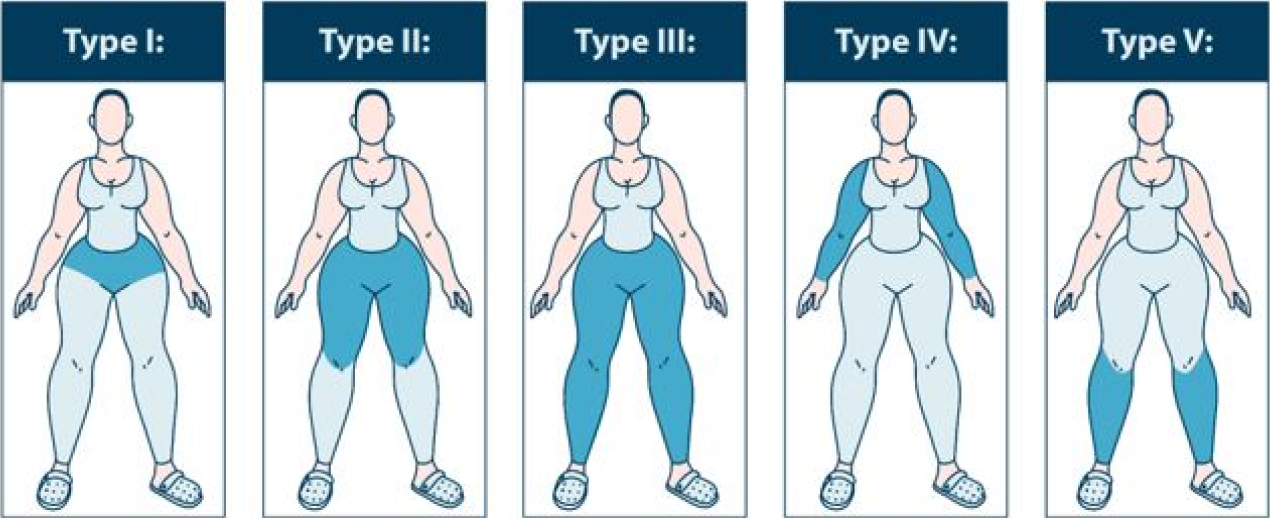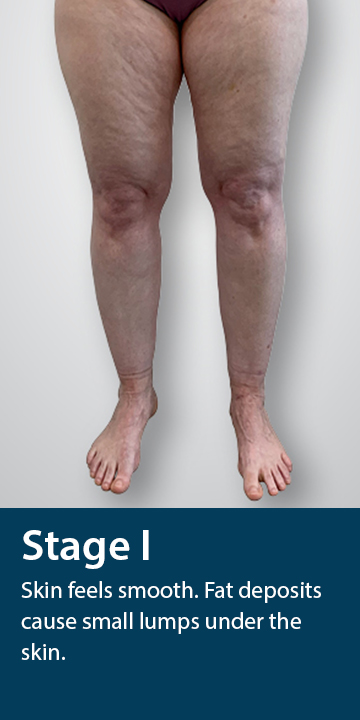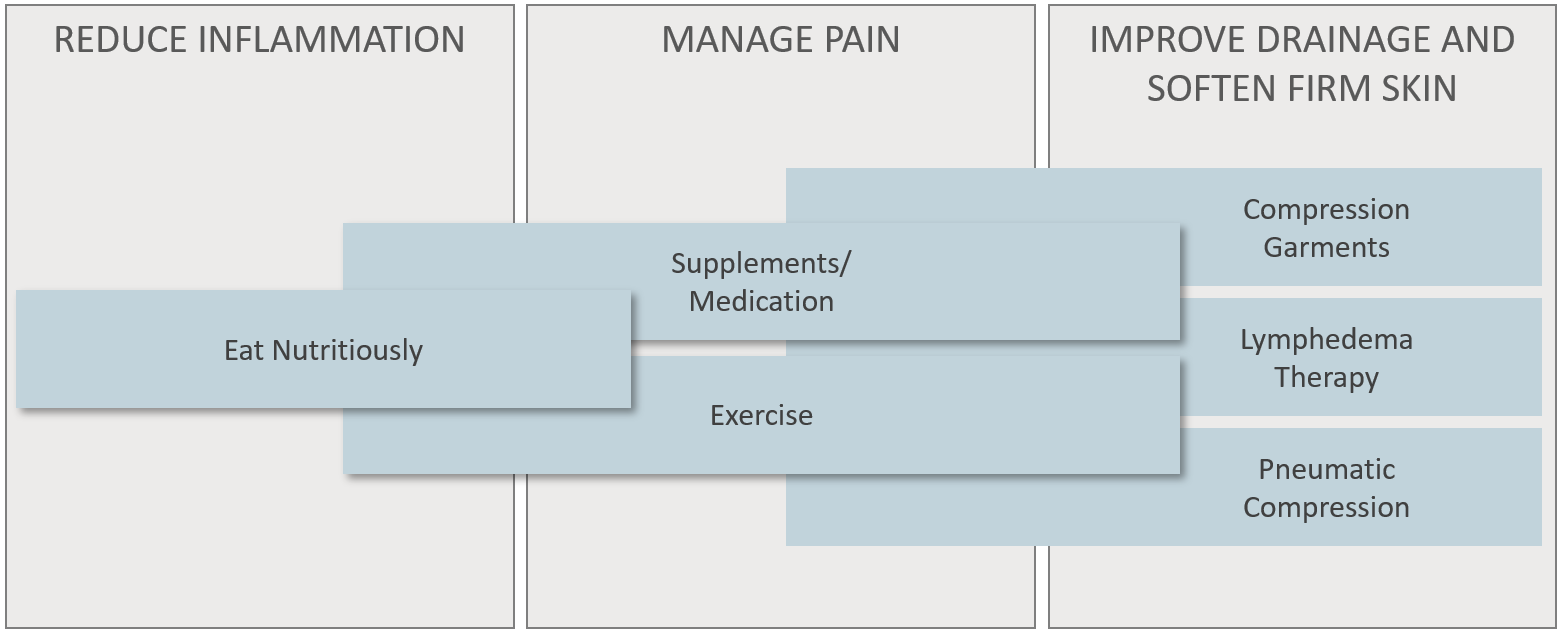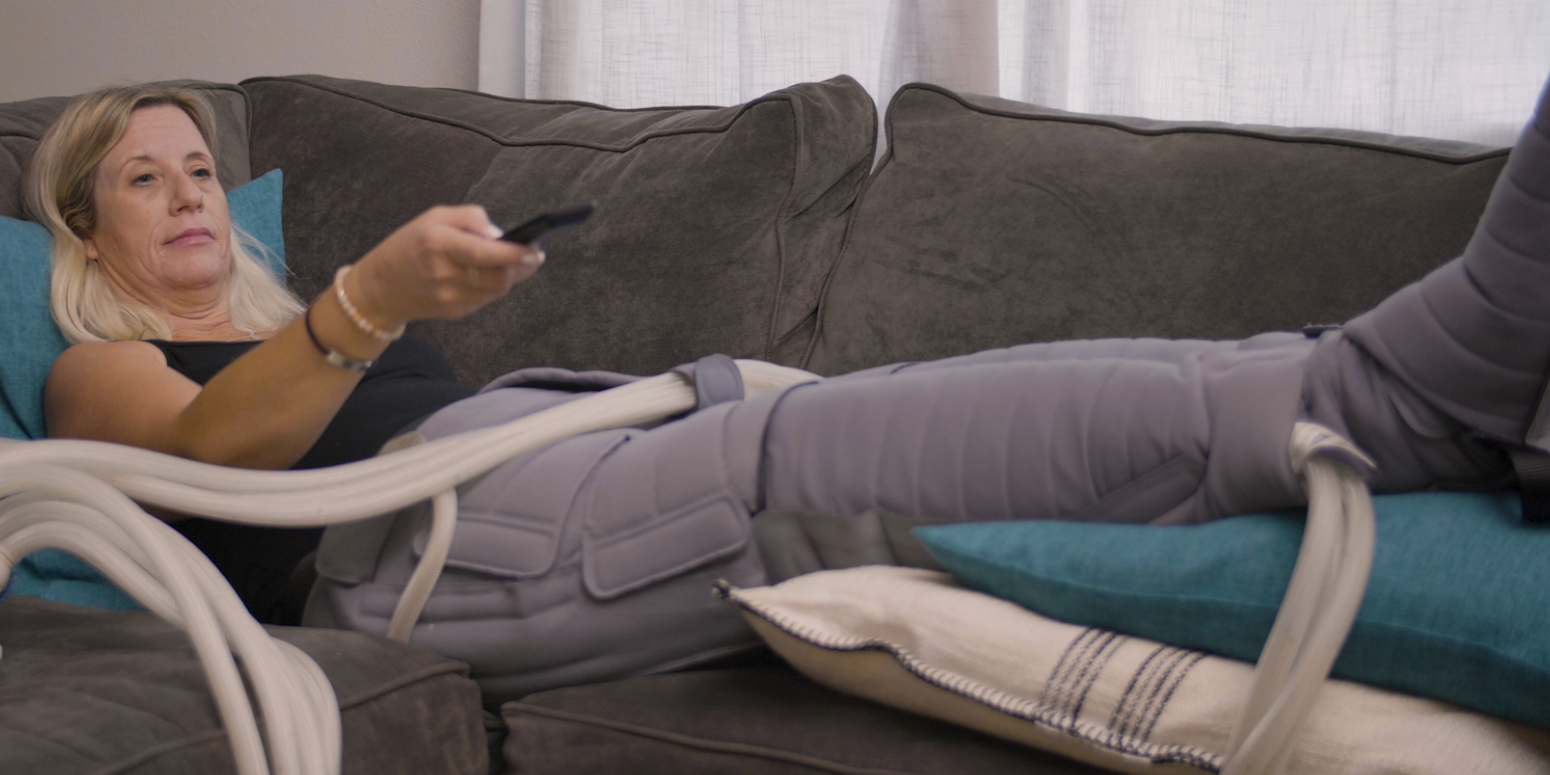Patients – Understanding Lipedema
What Is Lipedema
Recognizing the Signs of Lipedema
Lipedema is a loose connective tissue (fat) disease that occurs almost exclusively in women. Lipedema is often overlooked by medical professionals, but you have a voice and can ask for help1.
If you are experiencing any of the following characteristics ask your physician about lipedema:
- Legs (sometimes arms) disproportionately larger than rest of the body
- Symmetric fatty tissue that is resistant to diet or exercise
- Leg pain, tenderness or easy bruising
There are proven steps you can take to successfully manage your symptoms and increase your quality of life2. One step is using a pneumatic compression device (PCD) that can reduce swelling caused by a buildup of fluid in the tissues.

Types of Lipedema Explained

- Type I: Patients with Type I lipedema experience fat buildup between the navel area and the hips, often extending around the sides of the hips and to the buttocks.
- Type II: With Type II lipedema, the fat buildup begins at the pelvis and goes down toward the knees.
- Type III: The fat buildup in Type II lipedema starts around the pelvis and goes all the way down to the ankles. This is one of the most visible types of lipedema, with many patients having visible cuffs of fat around the ankles.
- Type IV: Patients with Type IV lipedema experience fat buildup between the shoulders and the wrists, which may cause cuffs of fat near the wrist.
- Type V: With Type V lipedema, the fat buildup is mostly limited to the calves.
Stages of Lipedema



Managing Lipedema Symptoms
Clinical experts recommend a multi-pronged approach to managing the symptoms of lipedema, and one of the key components is improving the drainage of excess fluid.
To do this, certified therapists use a form of massage known as manual lymph drainage (MLD), as well as compression garments, which help improve drainage and reduce swelling. To gain similar benefits from the comfort of your home, there is pneumatic compression therapy like Flexitouch® Plus.3
The following table illustrates how the multi-pronged approach (Figure 1) can help reduce inflammation, manage pain, improve drainage and soften firm skin.
Multi-Pronged Approach to Caring for Lipedema

How Flexitouch® Plus Helps Lipedema Patients

Flexitouch Plus System
The Flexitouch Plus system provides people with lipedema a comfortable and convenient way to self-manage lipedema from home. The system:
- Applies a gentle, wave-like massaging motion, which may be ideal for individuals with sensitive limbs
- Directs fluid away from impaired areas to enable drainage
- Provides symptom relief in approximately one hour
- Clinically proven to reduce swelling and enhance quality of life 1,4,5
“That was a turning point for me. Having Flexitouch allowed me to do my own therapy, in my own home.”
– Brittney C.
Get Started on a Path To Better Health
Fill out the form and a Tactile Medical Specialist will contact you
Or
Call us at 1.833.3TACTILE (1-833-382-2845)
"*" indicates required fields
1. Buck DW, 2nd, Herbst KL. Lipedema: A Relatively Common Disease with Extremely Common Misconceptions. Plast Reconstr Surg Glob Open. 2016;4(9):e1043.
2. Lipedema Foundation. Treating Lipedema. https://www.lipedema.org/treatinglipedema. Accessed April 7, 2021.
3. Tactile data on file.
4. Adams KE, Rasmussen JC, Darne C, et al. Direct evidence of lymphatic function improvement after advanced pneumatic compression device treatment of lymphedema. Biomed Opt Express. 2010;1(1):114–125.
5. Blumberg SN, Berland T, Rockman C, et al. Pneumatic compression improves quality of life in patients with lower-extremity lymphedema. Ann Vasc Surg. 2016;30:40–4.